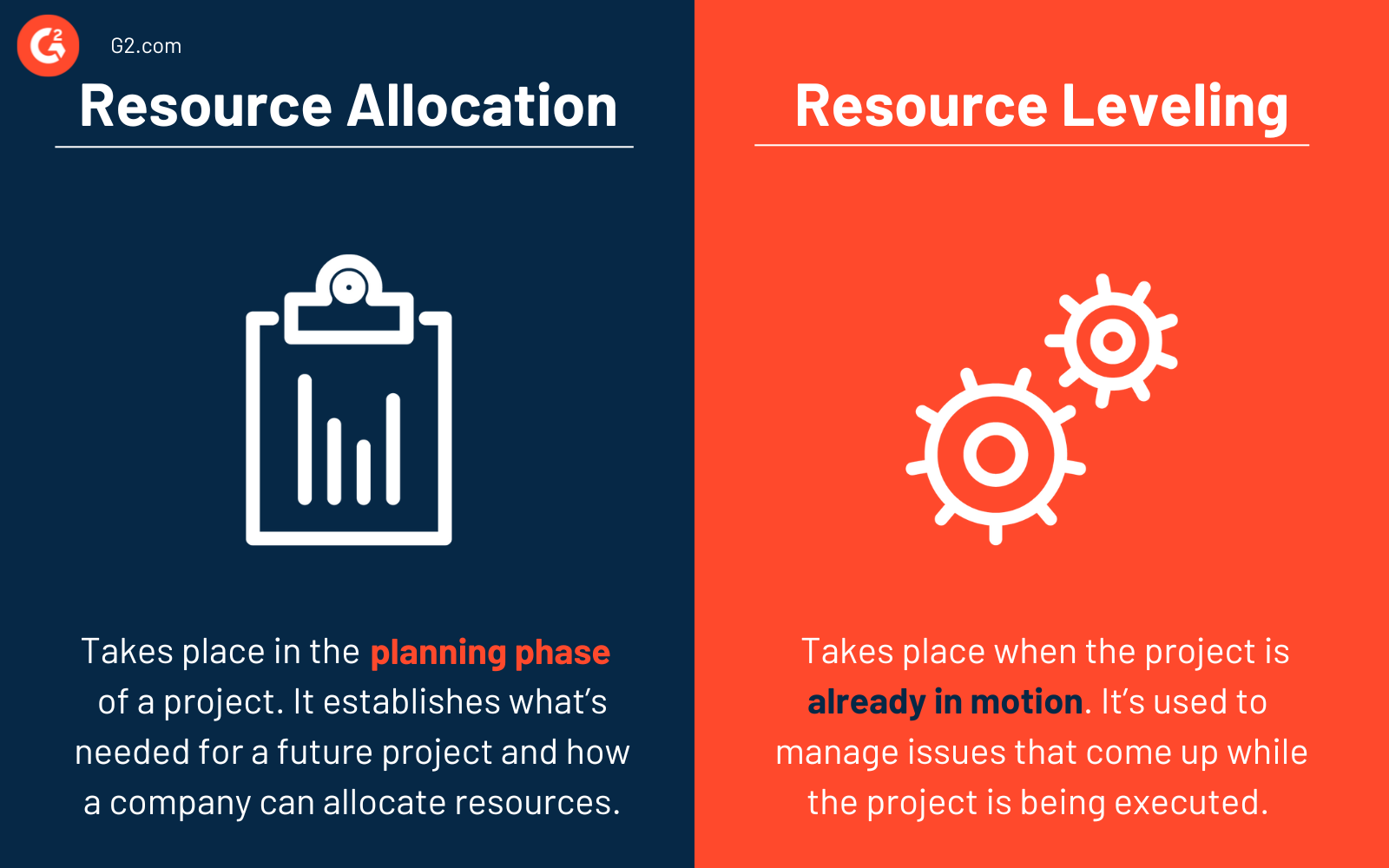What is resource allocation?
Resource allocation is the process of taking available company resources and strategically assigning them to meet several uses and goals. This includes distributing project tasks, observing workloads, tracking and adapting to unexpected changes, updating priorities, staying within budget, ensuring accuracy in project timing, and more.
Resource allocation allows companies to avoid under or overutilizing employees and materials. When resources are being allotted effectively, there are fewer opportunities for surplus or shortage. This increases return on investment (ROI) and creates a solid base for future projects.
Resource allocation is just one piece of the project pie. Tracking multiple projects from the planning phase to execution and beyond can be extremely time-consuming and tedious. This is why some companies utilize project management software to automate this process. PM software allows a company to monitor people and materials related to multiple projects at a time, all in one interface.
Types of resources to allocate
There are seven types of resources that a company can use for resource allocation to get organized before beginning a project. Each is determined in the planning process and is unique to a company’s priorities and capabilities. These resources include:
- The people who’ll participate in the project and play important roles in completing planned tasks.
- The locations where the project will take place. These can include physical venues or online structures.
- The data collected during project planning as well as throughout the project.
- The tools and materials needed to complete the project at each stage.
- A plan of how energy will be distributed and where the major priorities will lie.
- The finances involved in carrying out the project.
- The timing of the project. It’s essential to define how much time is available to complete the project and how much of it will be used at each step.
Benefits of resource allocation
With an effective resource allocation plan in place, companies can get through a project with ease, knowing that all resources have been allotted successfully. The benefits outline just what resource allocation can do to help a company run more efficiently, both in and out of the project process.
Resource allocation will allow a company to:
- Save money by ensuring that resources are being allocated efficiently and reduce the potential need to purchase or outsource people and materials.
- Ensure fewer resources go to waste by finding where existing materials fit into forthcoming projects.
- Improve time management by creating a strong timeline.
- Share proposed plans and create transparency among company personnel.
- Leverage skills of current employees to ensure that everyone is allocated the right tasks and feels confident in their responsibilities.
- Increase productivity by constantly updating resource allocation based on ongoing needs.
- Identify strengths and weaknesses in company resources and the entire project.
- Gain insight into the expected needs of future projects.
How to implement resource allocation
When it comes to project management, the key is to plan ahead and plan effectively. The same applies to every step of project management, including resource allocation.
To start implementing resource allocation in a project plan, follow the steps below:
- Determine project size and timeline. Speak to those participating in the project and define what the project looks like and how long it’ll take to complete.
- Identify necessary resources. Identify people, places, data, materials, energy, budget, and time needed.
- Gather information. Soak in as much knowledge as possible about the company structure, deliverables, and the people involved in the project. Classify team skills and capabilities.
- Allocate tasks. Use the important information from the last step to distribute tasks appropriately.
- Track time and workload. To ensure things run with ease, keep track of the project timing. This will ensure that everything follows the suggested timeline and, if it doesn’t, it can be addressed accordingly.
- Create a backup plan. For major changes throughout the project, consider implementing a plan b. This backup plan should include instructions on how the project can proceed smoothly, with the change in mind, and without major delays. It can also include resources that can be allocated in an emergency.
- Collect data. Managing a project doesn’t just happen when the project is underway. It’s essential to accumulate as much data as possible at every step of the process. This data could help identify strengths and weaknesses in the company’s allocation method and make necessary adjustments while re-allocating in the future.
- Consider using project management software. PM software organizes resource allocation information as well as all information regarding the project virtually in one place.
Resource allocation best practices
Resource allocation isn’t always easy to get right. Here are some best practices to keep in mind as the resource allocation process plays out:
- Get ready to adapt. Major changes in the company or project can create setbacks and confusion. This can include changes in vendors, team members, budgets, and project priorities. Changes in resources mean major adaptation because when resource inventory is altered the entire project plan changes.
- Beware of underutilization and overutilization. Underutilization occurs when insufficient resources are used for a project, and overutilization occurs when too many resources are used. Underutilization can cause a surplus of materials when they’re not engaged to their full potential. Overutilization can cause a shortage of materials, an increase in the project budget, and timing setbacks. These instances can also relate to employees being under or overutilized based on time management and personal skills.
- Structure timing to avoid task delays. Once the timeline is set for a project, do everything possible to stick to it. If things don’t go as planned, consider resource leveling to remedy any foreseeable issues.
- Be realistic in setting deadlines. Before sticking to that project timeline, ensure that the company can meet the set deadlines. Nobody’s perfect, so expecting perfection is counterproductive. Remain practical about resources and skills that are available.
- Make space for open communication. A well-oiled project plan is one where all parties involved are on the same page. Miscommunications cause delays, so ensuring that everyone understands the tasks at hand is crucial.
Resource allocation vs. resource leveling
Resource allocation and resource leveling are often confused because they have similar applications in the project management process. However, the biggest difference between the two lies in the phase in which they’re relevant.

Resource allocation takes place in the planning phase of a project. It’s a process that helps establish exactly what’s needed for a future project and how a company can allocate those resources. These people, places, and things are all planned before any part of the actual project begins.
Resource leveling takes place when the project is already in motion. It’s more of a problem solver used to manage any issues that come up while the project is being executed. Some of the issues addressed using resource leveling include underutilization, overutilization, budget issues, delays, and general project conflicts. Leveling works to ensure that the project doesn’t exceed allocated resources and operates smoothly according to the proposed plan created in the resource allocation phase.
While resource allocation aids in resource defining, resource leveling allows a company to adapt to project changes as they occur in real time. Allocation is the “before,” and leveling is the “during.” With that said, both are needed to secure a successful project with little to no issues or challenges by managing supplies at every stage.

Alexandra Vazquez
Alexandra Vazquez is a former Senior Content Marketing Specialist at G2. She received her Business Administration degree from Florida International University and is a published playwright. Alexandra's expertise lies in copywriting for the G2 Tea newsletter, interviewing experts in the Industry Insights blog and video series, and leading our internal thought leadership blog series, G2 Voices. In her spare time, she enjoys collecting board games, playing karaoke, and watching trashy reality TV.




















